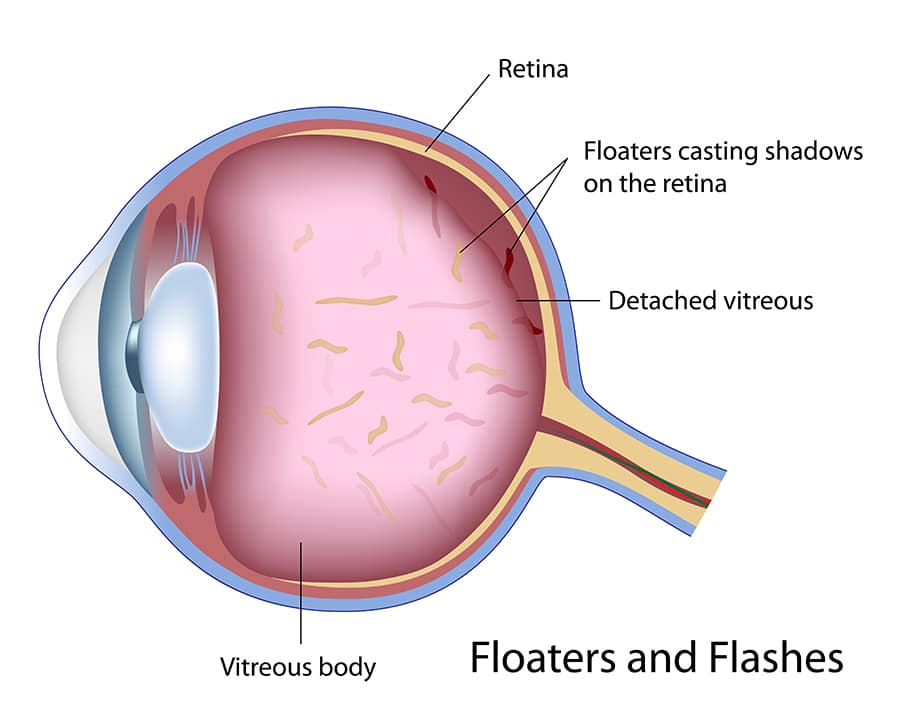Flashes and floaters are common visual disturbances, typically associated with age-related changes to the vitreous—a gel-like substance that fills the eye and is firmly attached to the retina from birth. As part of the natural aging process, the vitreous becomes thinner and more liquefied. Eventually, it may separate from the retina, a condition known as posterior vitreous detachment (PVD).
During PVD, small particles of tissue that were previously embedded in the vitreous gel become dislodged and cast shadows on the retina. These shadows are perceived as floaters (specks, strands, or cobweb-like shapes). In addition, flashes of light may occur when the vitreous tugs on the retina.

While these symptoms are often benign, any sudden or significant change in visual perception should be promptly evaluated by an ophthalmologist.
Causes Of Flashes And Floaters
Flashes result from mechanical stimulation or traction on the retina. Patients may see brief streaks of light or lightning-like flashes, especially in dim lighting.
Floaters occur when collagen fibers or cellular debris float within the vitreous, casting shadows on the retina. These appear as dots, threads, or cloudy shapes in the visual field and are often more noticeable against light, plain backgrounds.
Contributing factors beyond aging may include:
-
Nearsightedness (Myopia)
-
Eye trauma or injury
-
Cataract or YAG laser surgery
-
Diabetes
-
Retinal inflammation (Retinitis)
-
Eye infections
-
Migraine-associated visual disturbances
-
Spasms of small blood vessels
Diagnosing Flashes And Floaters

While most cases of PVD do not result in serious complications, a small percentage of individuals may develop retinal tears. These can progress to retinal detachment, a sight-threatening condition that requires urgent intervention.
Symptoms of concern include:
-
A sudden increase in floaters
-
Persistent light flashes
-
A curtain-like shadow across the field of vision
-
Sudden vision loss in part of the visual field
A comprehensive dilated eye examination is essential to accurately diagnose the cause of flashes or floaters. Only with dilated pupils can an ophthalmologist thoroughly assess the retina and rule out retinal tears or detachment.
Patients diagnosed with uncomplicated PVD should return for follow-up, as retinal tears can develop within six weeks of initial symptoms.
Treatment Of Flashes And Floaters
In most cases, flashes and floaters do not require medical treatment and may subside over time. However, for patients experiencing persistent or debilitating symptoms, or for those at risk of complications, treatment may be necessary.
Retinal Detachment Treatment
If a retinal tear or detachment is diagnosed, emergency treatment is required. Prompt intervention—often with laser therapy or surgery—can prevent permanent vision loss. With timely care, most patients maintain good visual outcomes.

